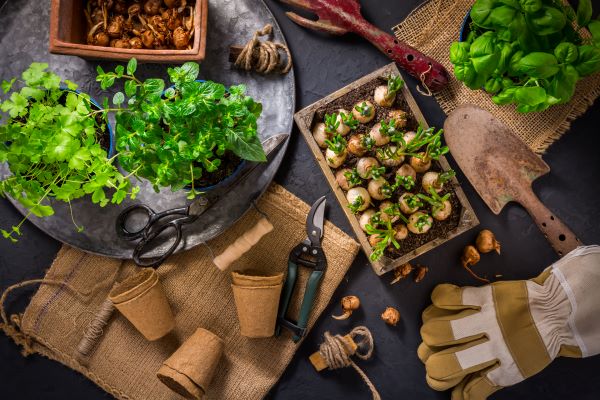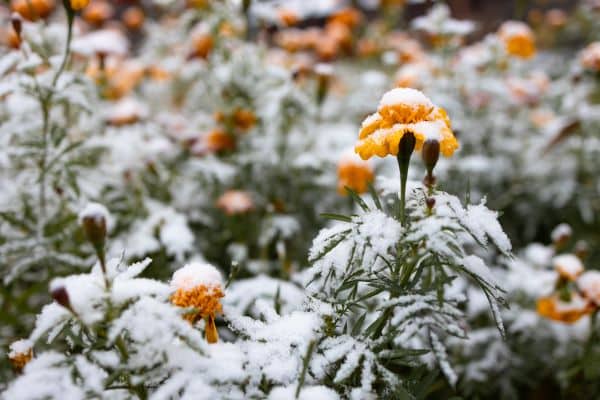Winter brings a unique set of challenges for gardening enthusiasts, often dampening the spirit of those with a passion for nurturing plants. The dropping temperatures and shorter days signal a pause in the gardening activities that thrive in warmer months. However, the cold season does not necessarily mean a halt to the joy of gardening. This article delves into practical ways to maintain a vibrant garden during winter, exploring techniques and strategies to keep your green thumb active. From selecting the right plants to innovative indoor gardening methods, the insights provided here aim to inspire and guide gardeners to embrace the winter season as an opportunity for growth and experimentation in their gardening journey.
Contents
Understanding Your Winter Garden

Winter gardening requires a different approach compared to the bountiful summer months. It begins with understanding the resilience and needs of various plants during the colder season. Gardeners must pay close attention to local climate conditions, including frost dates and temperature ranges, as these factors significantly influence plant health and growth. Knowledge of plant hardiness is crucial, as it determines which plants can survive and thrive in your specific winter conditions. This understanding helps select suitable plants and informs the necessary adjustments in care and maintenance to ensure a thriving winter garden.
Adapting to winter’s demands means recognizing the limited natural resources available during this time. Shorter days and less intense sunlight affect photosynthesis, while lower temperatures can slow down plant metabolism. Gardeners should consider these changes and adjust their care routine accordingly. Watering schedules, soil nutrition, and protection against frost are key areas to focus on. Embracing these winter-specific gardening practices helps maintain a healthy garden and enhances the gardener’s skills and understanding of plant life cycles throughout the year.
Choosing the Right Plants

Selecting the right plants is pivotal for a successful winter garden. Indoor plants that thrive in lower light conditions and cooler temperatures become ideal choices. Varieties like Pothos, Peace Lilies, and Snake Plants are resilient and enhance indoor air quality. These plants adapt well to indoor environments and require minimal maintenance, making them perfect for winter gardening.
Outdoor winter gardening also offers a realm of possibilities. Hardy plants that withstand frost and lower temperatures are key to a lively outdoor winter garden. Evergreens, winter-blooming flowers like Hellebores, and certain shrubs and trees maintain their vibrancy and add color to the otherwise bleak winter landscape. The choice of plants should be guided by their ability to endure the winter climate of your area, ensuring that your garden remains a source of joy and life even in the coldest months.
Creating an Indoor Oasis

Turning your home into a winter gardening oasis is a delightful way to keep the green thumb active. The first step is identifying the right location within your home that can support plant life. Areas with sufficient natural light, such as near windows, are ideal. However, artificial grow lights can be a valuable investment without adequate sunlight. They compensate for the lack of natural light and control the light cycles, which is essential for plant growth.
Maintaining the right environment is crucial for indoor gardening. Plants require a stable temperature and humidity level to thrive. During winter, indoor heating can reduce humidity, which might not be favorable for some plants. Using humidifiers or placing water trays near plants can help maintain the needed humidity. Regular monitoring and adjustments ensure that plants receive the right amount of light, warmth, and moisture, making your indoor garden a thriving sanctuary during the winter months.
Winter Garden Maintenance

Maintaining a garden during winter is as crucial as setting it up. The reduced sunlight and colder temperatures call for a modified watering schedule. Overwatering can be detrimental in winter, as plants use less water due to slower growth rates and reduced evaporation. It’s essential to understand the watering needs of each plant and adjust accordingly. The soil should be moist but not soggy, and watering should be done during the warmer part of the day to prevent freezing.
Pruning plays a significant role in winter garden maintenance. It helps eliminate dead or diseased branches, encouraging healthy growth in spring. It’s also the time to remove any spent blooms and leaves, which can harbor pests or diseases. This cleanup keeps the garden tidy and prepares plants for a vigorous start when the warmer weather returns. Additionally, winter is a good time for gardeners to plan for the upcoming season, perhaps considering new plant varieties or garden designs.
Protecting Outdoor Plants

Outdoor plants need extra care to survive the harsh winter conditions. Mulching is an effective way to protect the soil and roots from extreme temperature fluctuations. Organic mulches like straw or bark chips provide insulation, keeping the soil warm and retaining moisture. Mulching also helps in preventing soil erosion during heavy winter rains or snow.
Frost protection is crucial for tender plants. Techniques such as using frost covers or cloches can shield plants from frost damage and provide a microclimate for warmth and growth. Wrapping shrubs and trees with burlap or frost cloth can also prevent windburn and frostbite. It’s essential to monitor the weather forecasts and cover plants before a frost night, removing the covers during the day to allow for air circulation and sunlight exposure.
Engaging in Community Gardening Activities

Community gardens and gardening clubs offer a great way to engage in gardening during winter. These spaces often have resources for winter gardening, including shared greenhouses or indoor gardening areas. Engaging with a community of fellow gardeners can provide motivation, support, and new ideas for winter gardening projects.
Participating in community gardening activities also offers opportunities to learn from more experienced gardeners. Workshops, seminars, or informal gatherings can be excellent resources for tips on winter gardening, from plant selection to maintenance. Additionally, community gardening fosters a sense of belonging and contributes to mental well-being, which can be especially beneficial during winter’s shorter, darker days.
The Bottom Line
Keeping your green thumb active in winter is not only possible but can be a rewarding experience. It challenges gardeners to adapt, learn, and explore new dimensions of their hobby. Whether through indoor gardening, protecting outdoor plants, or engaging with a community of fellow enthusiasts, there are numerous ways to maintain a vibrant garden during the colder months. As this article has shown, winter gardening offers unique opportunities for growth, experimentation, and enjoyment. Embrace the winter season as a time to nurture your passion for gardening and discover the joys and benefits it brings to your garden and well-being.


